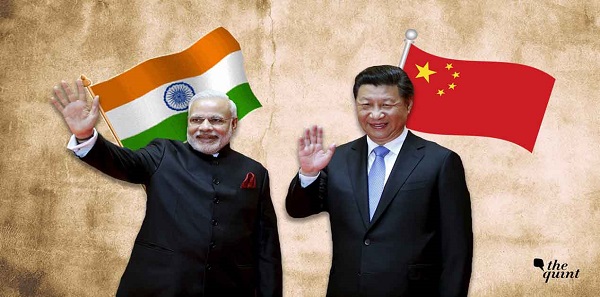The informal meeting between the Indian Prime Minister Narendra Modi and Chinese President Xi Jinping on April 27-28, 2018, has raised a lot of hope that there may be a new policy direction to improve the bilateral relations. Both the leaders showed comfort while interacting and managed to discuss issues for about nine hours during their two day informal talks. The informal summit did create bonhomie and great photo opportunities, but the question which lingers is did the two sides achieve anything concrete from the talks? Modi has become the only leader to be received by Xi outside Beijing twice, that is special and an indication of the personal comfort shared by the leaders and also indicates towards the importance which the two sides assign to this bilateral relationship. But can India and China with their multitude of differences overcome their mistrust of each other’s intentions within coming days.
Apart from the announcement that India and China are interested in launching joint economic projects in Afghanistan there were no other concrete agreements. The Ministry of External Affairs (MEA) said the aim was not to sign agreements but improve understanding between them and create the atmosphere for building trust. However, there is a need to understand if something was actually achieved during this informal visit and if the two leaders did walk away with similar ‘take outs’.
According to the Press Release of the MEA, “The two leaders therefore agreed that India and China as major powers with strategic and decisional autonomy will pursue peaceful, stable and balanced relations and such a relationship will be a positive factor of stability amidst the current global uncertainties”, while the Chinese Ministry of Foreign Affairs stated, “A peaceful, stable and balanced relationship between China and India is an important positive factor for the stability of the world. The two countries will work together to enhance stable and balanced development of major-country relations, advance stability, development and prosperity of Asia in the 21st century, promote the rejuvenation of the oriental civilization and make a positive contribution to global peace and development”. These statements highlight that both Modi and Xi have acknowledged the importance of India and China in maintaining global peace and stability and also agree that this bilateral relationship has to work better if any trust and differences are to be overcome.
Last year’s 70-day standoff between the two armies at Doklam had raised the issue of communication. In order to address this issue and hoping that no such incident occurs in future, statements have been issued. The MEA states that the two leaders, “agreed on their need to strengthen strategic communication through greater consultation on all matters of common interest. They believe that such strategic communication will have a positive influence on enhancing mutual understanding and will contribute to regional and global stability”. The Chinese Ministry of Foreign Affairs said, “Guided by the leaders of the two countries, they will strengthen dialogue in political, security and other areas to have full and timely communication on major issues of mutual interest to enhance understanding and expand consensus so that the China-India relationship will always keep to the right direction”. In addition to this there was also an increased focus on strengthening communication between the militaries and leaders. These statements underline that India and China, even though they are close neighbours, lack strong channels of communications. This is to be addressed, the leaders agreed, and there is discussion about creating a ‘hotline’ between the Chinese and Indian military headquarters.
Ways and need for increasing and building people-to-people contacts was also stressed by both sides in their respective press releases. However, what was interesting is that the Chinese statement did not mention the discussion about trade and investments. The Indian statement did argue that there is a need to “push for trade and investment” the Chinese statement is completely silent on this issue. Trade deficit and problems of accessing the Chinese markets is a major challenge faced by Indian entrepreneurs. If India wants to correct the increasing trade imbalance a major push from the Indian government is an urgent need. However, the Chinese side did acknowledge the need to look for ways to exploit the “full potential of business” and also to achieve a “win-win” situation, without mentioning the issue of trade imbalance.
The issue of terrorism also had similar undertone. The Indian statement is stronger compared to the Chinese. This is to be expected keeping in view China’s ‘all weather friendship’ with Pakistan. China has announced heavy investments in Pakistan under the China Pakistan Economic Corridor (CPEC) and the Gwadar Port. Pakistan is important for China’s Xinjiang region the push for growth in the Western regions, as well as Xi’s pet Belt and Road Initiative (BRI) project.
The Modi-Xi informal talks rightly covered ways to prevent Doklam like stand-offs, However, on the issues of boundary, trade and terrorism concrete results are to be awaited. India and China today are two of the fastest developing economies. They are neighbours and also important global players and trying to gain respective spaces in the international order. The leaders of these nations understand the importance of economic growth and at this meeting at least underlined that China may not want to engage in any kind of military adventure at least for a while. Mistrust continues to remain an issue that would need more talks on ways to overcome the existing differences and disputes like Doklam.
(Views expressed are of the author and do not necessarily reflect the views of the VIF)
Image Source: https://www.thequint.com/news/india/pm-narendra-modi-wuhan-china-visit-live-updates










Post new comment